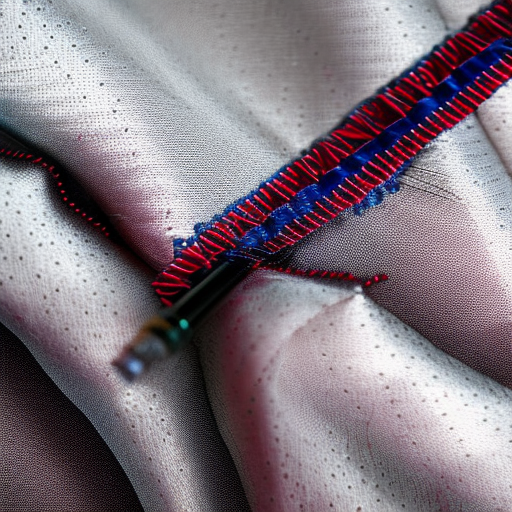
When it comes to sewing, one of the most versatile and elegant stitches you can use is the satin stitch. This stitch is commonly used for decorative purposes or to create intricate patterns. It consists of densely packed, closely spaced stitches that create a smooth and glossy appearance, resembling satin fabric.
The satin stitch can be used on various fabrics, but it truly shines on satin fabric, hence its name. Satin, known for its lustrous shine and smooth texture, complements the stitch beautifully, resulting in a stunning finished product.
To create a satin stitch, you will need an embroidery hoop, satin fabric, embroidery floss or thread, and a sharp needle. Here’s a step-by-step guide:
- Prepare your fabric by placing it in the embroidery hoop, ensuring it is taut.
- Thread your needle with your desired color of embroidery floss or thread.
- Create the outline of the area you want to fill with satin stitch using a backstitch or running stitch. This will serve as a guide for your satin stitches.
- Starting from the edge of your outlined shape, bring the needle up through the fabric on one side.
- Take the needle across the shape, inserting it down through the fabric on the opposite side. Keep the stitches close and neatly aligned.
- Continue stitching parallel rows until the entire shape is filled, making sure to cover any gaps and maintain a uniform appearance.
- Secure the thread at the back of the fabric by making a knot and cutting off any excess.
Remember to practice your stitch on a scrap piece of fabric before attempting it on your project. This way, you can perfect your tension and ensure consistent stitches.
The satin stitch can be used to embellish various sewing projects. It’s perfect for creating floral designs, monograms, or even intricate patterns such as Celtic knots. The smooth and shiny finish adds a touch of elegance to any item, whether it’s a garment, a pillowcase, or a table runner.
When using satin stitch, consider playing around with different thread colors and textures to create unique effects. You can experiment with variegated or metallic threads to add dimension and sparkle to your designs.
So, whether you’re an experienced sewer or new to the craft, try incorporating the satin stitch into your sewing repertoire. The stunning results will make your projects truly stand out and leave a lasting impression.





Great way to make something really stand out!
Holly Anderson: I’m excited to try it out!
I completely agree; stitching satin can really make a piece shine! It’s a cost-effective way to create a one-of-a-kind design and add nice touches to a garment that can make a big impact. Looking forward to seeing the results!
Absolutely! Sewing satin requires precision and skill, so I’m sure the projects will be amazing!
Definitely – it’s so satisfying seeing a project come together with the perfect combination of delicate fabrics and dainty stitches!